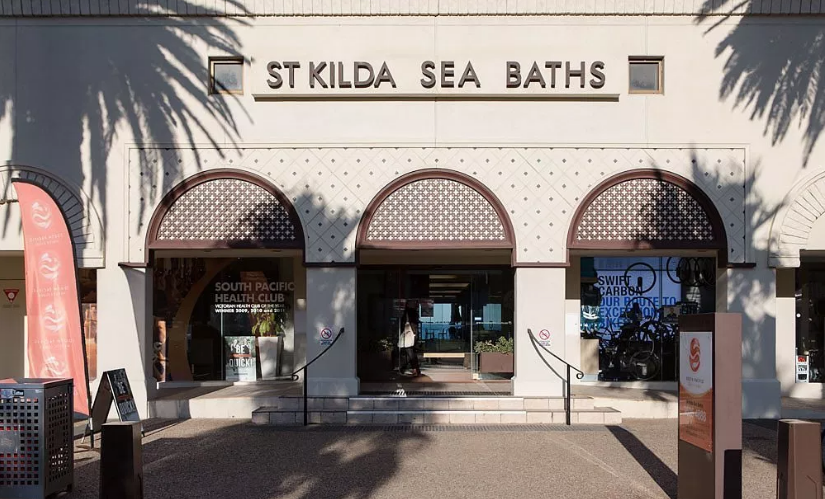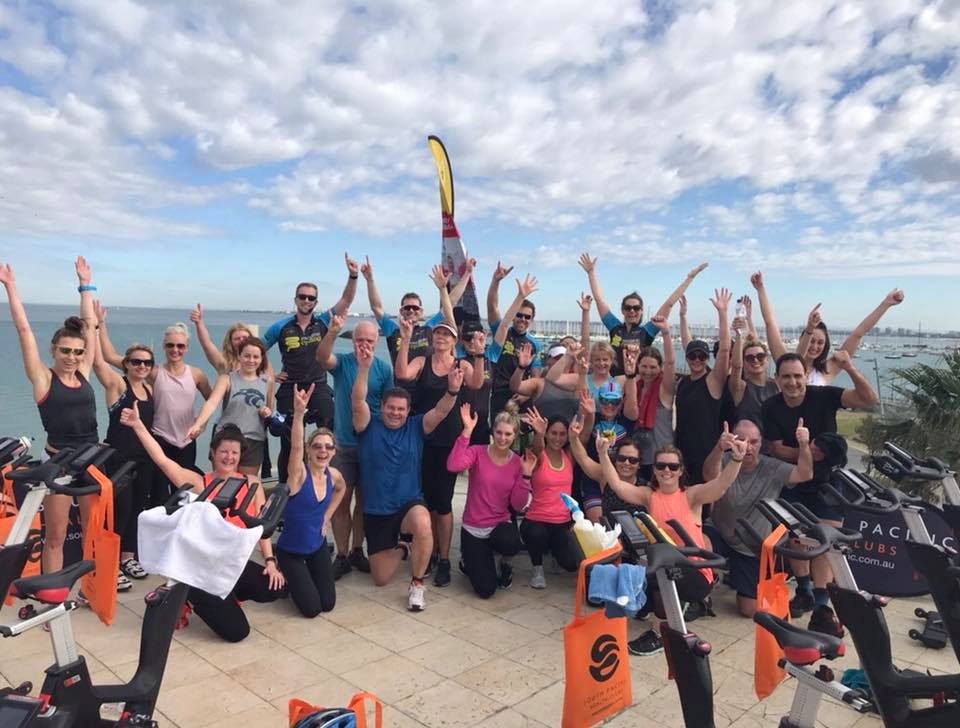Craig Mac from WNiF catches up with South Pacific Health Club owner Conn Constantinou for an in depth interview about the upcoming introduction of altitude technology to his flagship St Kilda club.
Simulated altitude training to South Pacific Health Club
Craig Mac: Your South Pacific St Kilda club, which opened in 2001, is located in the iconic Sea Baths complex with enviable, uninterrupted views of the bay. What makes this (your first club) so special?
Conn Constantinou: This was the beginning of our dream, seeing our vision of the ultimate health club in the ultimate location, so it will always hold a special place. St Kilda has grown with us – we are now into our 19th renovation and expansion!
Incorporating over 3600sqm you can train any way you wish, with the views of the bay, the sounds of the waves and if you are especially lucky dolphins enjoying the location with you.

Craig: Including St Kilda, there are six South Pacific clubs (Chadstone (24/7), Melbourne City, Mentone (24/7), Port Melbourne (24/7) & Williamstown). Your focus has always remained on developing a strong relationship between your members and staff to provide an exceptional member experience. As a multi-site operator, what protocols do you have in place to ensure you strike that balance?
Conn: An emphasis on systems and best practices with the internal staff training to back that up has been a major focus for the Group for the past 3 or 4 years. We are always searching for ways to improve our staff to member interaction adding to the member experience.
Craig: Not one, not two, but three altitude training rooms coming soon to your St Kilda club. What was the attraction of introducing altitude, and was it purely a strategic move to further differentiate from the competition?
Conn: Whilst anything you introduce to a business has an element of strategy, we also believe completely in the benefits that Altitude Training can deliver. We live in world that is very time poor, having an offering that can deliver results in half the time, as well as assist the body in ways such as faster healing, better breathing and aging will always be seen as an advantage.

Craig: The product offering (getting the right mix of services and facilities) is of course paramount to the success for any premium club. What are your thoughts on altitude training as the latest trend to hit the Australian fitness industry?
Conn: Australians are always looking for the next trend in achieving their exercise goals. But to use the term ‘trend’ for Altitude Training is not paying it the respect it really deserves as Altitude Training has been around for decades if not centuries. Elite athletes over all facets of the sporting world have been relying on this type of training to take them to the next level, and then to recover.
We are just opening this training up and making it available to the everyday athletes that are part of our membership. Those that love to ride, to lift, to run and to do any form of functional training will benefit.
Craig: When it came to choosing a supplier for your altitude technology, what criteria did you set for a manufacturer to meet, and did you ‘shop around’?
Conn: Over the last 2 years we met with all the major Altitude Suppliers in Australia. After due consideration we believed that Chris Chatto and his team from XTREME International had the most experience and by was by far the leader in delivering all types of Altitude Systems. I believe his nickname is “Mr Altitude”.

Craig: How did you approach the equipment fit-out, layout and design for your altitude rooms?
Conn: To truly create something unique the choice of equipment and programming was paramount. After working with Ross Barbour from Aktiv Solutions on another project we felt that his passion and experience in functional training would help provide a turnkey solution.
The St Kilda Club already provides a functional training zone with 25 metre sled and sprint track offering 20 classes per week. As this is already extremely popular with members we needed to launch something completely different that wasn’t available in the main gym offering. We worked closely with Ross so this would also allow continued progression and variety over the longer term.
Craig: Are there additional costs for members to use the altitude trainings rooms, and if yes, what are your expectations on member uptake?
Conn – With the additional investment in the extra altitude facilities and services and there will be an extra cost for members of $25 per week. We are aiming for a take up rate of 5% of the SPHC St Kilda membership base within the first 12 months.

Craig: What are your ongoing running costs for the altitude rooms?
Conn: Excluding set up costs, we forecast we will incur coaches costs for teaching sessions, extra power and repairs and maintenance costs.
Craig: What marketing strategies have been put in place to ensure a successful launch of your new facilities, firstly to your existing members and secondly to new prospects?
Conn: We will promote internally to our members through digital signage, staff communication and interaction and social media. We are working with 2 new Digital Marketing companies specialising in SEO and Google Adwords plus a social media strategy including video posting on Facebook and Instagram.

Craig: Do you feel there is a misconception that training at altitude is reserved for elite athletes or professional sportspeople, and if yes, how would you look to overcome the “it’s not for me” objection from your members?
Conn: There may be a view from some that ‘its not for me’ but with the right education that misconception can be easily debunked. The beauty with this training is that you will be able to see and feel the results, right there in front of you.
For example, a participant can see just how many calories they are burning at Altitude, as opposed to a ‘sea level’ workout. Removing that fear of the unknown and creating a buzz – a curiosity to try – will create a pull for the members.
Craig: What are your top 3 benefits for training at altitude?
Conn: Apart from the really cool studios and state of the art equipment we are providing, the main benefits of altitude training are:
- Burning more calories (time efficient training).
- Weight management.
- Increase in fitness, strength and muscular endurance.

Craig: What additional training does your staff need to undergo to competently instruct and prescribe exercise programs for your members in the altitude rooms?
Conn: There is a 2 day Altitude Training Workshop including training under altitude conditions for all staff plus a third day for programming and session instruction.
Craig: Is there a tipping point for you in deciding to roll out altitude at the other five South Pacific clubs?
Yes we would like to see a 5% uptake in member participation to consider the roll out to all clubs.
Craig: Are there any additional South Pacific Health Clubs on the horizon for 2018/19?
Conn: Yes we are negotiating with a number of landlords to further expand the brand early next year and beyond. Our aim is to help more of the population to embrace a more active and healthy lifestyle thru regular exercise.
Want to know more?
To speak with Conn Constantinou further about the introduction of altitude technology at South Pacific Health Clubs call 03 9525 4888 or email [email protected].
Article written by Craig Mac for the What’s New in Fitness Magazine.
Check out these articles:

If You Haven’t Moved To Cashless Gym Vending Machines, Now Is The Time
In 2025’s fitness landscape, the integration of cashless vending machines in gyms across Australia is gaining momentum. These machines offer a seamless blend of convenience and functionality, benefiting both gym owners and members. In the past, smaller gyms faced unique challenges when considering the installation of vending machines due to coin and banknote payment systems

An Insider’s Guide To Raising A Family While Growing A Business
Balancing the demands of parenthood with the responsibilities of running a business is no small feat. For Georgie Richard and her husband Mitch, owners of Fitstop Wollongong, it’s a daily juggle between managing their thriving gym and raising their young family. We took a peek beneath the superhero cape and asked Georgie how she and

Best Practices For Creating Video Content in 2025
Effective video content is the heart and soul of most forms of online communication in today’s fast-paced digital age. From social media to professional platforms, videos are everywhere. And the use of videos is only gaining momentum. It doesn’t matter if you’re a small business owner, a fitness entrepreneur, or a content creator, it’s important to

Driving Growth in Australian Fitness Franchises By Leveraging Technology and KPIs
This article was provided by Jaffrey Ali, Chief Product Officer at FranConnect As Summer approaches, gyms across Australia are experiencing a surge in memberships. Health-conscious individuals, both new and returning, are flocking to fitness centres to prepare for the warmer months. This rising trend presents a golden opportunity for fitness franchises and multi-location gyms to

Changing Your New Mum Goal Setting Language
Your new-mum client walks into the gym. You congratulate her on her recent arrival, move through her pre-exercise questionnaire and then it’s time for goal setting! An often overlooked aspect of working with clients is helping them to reframe their view of what health and fitness means. Jen Dugard, founder of MumSafe, shares some advice

Using Instagram To Grow Your Fitness Business in 2025
In today’s day and age, Instagram is an indispensable tool for any fitness business. From personal trainers and nutritionists to fitness centres and studios alike, social media has become a powerhouse for promoting services, connecting with potential clients, and building a highly recognisable brand. Different platforms work best for different demographics and in this article,

Five Questions With Panatta Australia’s Tony Griffin
WNiF had the opportunity to catch up with Tony Griffin, Managing Director at Panatta Australia at the AusFitness Industry Trade Show and Summit recently in Sydney. Panatta had an impressive range of their industry-leading commercial fitness equipment on display and was drawing plenty of attention from facility owners keen to level up their gym floor

Is Biohacking The Next Frontier in Client Engagement?
Biohacking is so popular that there’s an entire subreddit devoted to it these days. What is it, and how can you utilise it as a fitness professional to help your clients achieve their goals? In the noisy fitness landscape, trainers are always looking for ways to stand out from the crowd, so is the rise

An Insider’s Guide To Securing Sponsorship For Athletes
Sponsorship is abundant, and it’s available to athletes of all levels from elites to beginners as well as clubs, sporting organisations, businesses and individual professionals. Now more than ever before, sponsorship is about the benefits you can give to your sponsors off the sporting field. Media, social media, social networking and brand ambassador activities are
